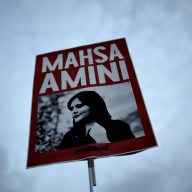NEW YORK – Unlike big-city bankers, Stan Wilmoth didn’t make lots of dumb loans during the boom. After the crash, he accepted not a dime of taxpayer money for his bank. His salary? “Substantially less” than the $1 million the former head of Merrill Lynch spent remodeling his office, he says. He credits his grandfather, a Protestant minister, with giving him “moral fiber.”
But judging from the rhetoric coming out of the Obama administration, Wilmoth, the folksy 58-year-old president of Heritage Bank of Reno, Nev., should be scorned, not praised.
His sin? He’s shirking his patriotic duty by not lending enough money to his community.
It’s easy to hate bankers right now, but is it possible that on the issue of lending they’re getting a bum rap? After all, it’s not just “fat cats” with multimillion-dollar bonuses who aren’t lending much money. It’s small fry like Wilmoth, too. His bank, owned by 352 Nevada families, has just $393 million in assets versus $2.3 trillion at Bank of America.
Everybody agrees lending is down in the past year, despite a government infusion of hundreds of billions of dollars to prop up banks, unfreeze the credit market and get institutions to start making loans again. As in past recessions, though, the drop seems to reflect more a lack of demand from would-be borrowers than any stinginess on the part of bankers.
“We really haven’t changed our lending criteria in the last five years,” Wilmoth says. “The only thing that has changed is the number of qualified borrowers.”
Critics complain banks are using deposits to buy securities, like government bonds, instead of lending the money to consumers and small businesses. But bankers and analysts say the industry is just following a familiar, and healthy, playbook on how to manage its finances early in a recovery when the risk of borrowers defaulting is still high. It’s a playbook pretty much written by the Federal Reserve: Borrow for themselves at near-zero short-term interest rates set by the central bank to buy higher-yielding securities, such as Treasurys, while waiting for creditworthy borrowers to return.
Bankers call it playing the yield curve, or the carry trade, and it can be a tonic for the industry. While waiting for the economy to get back on its feet, banks make profits on the difference between the rate they’re paying to borrow and the rate they’re receiving on the securities. They use the profits to plug holes in their balance sheets.
At Heritage, Wilmoth is paying holders of seven-month certificates of deposit 1.3 per cent a year, then using the money to buy AAA-rated municipal bonds yielding an average 3 per cent, he says. His profit: 1.7 per cent, or the difference between the two rates.
“Loan demand is way down,” he says, and “I got to make money” somehow.
–
“The fix is the same as it was in the early ’90s – make money on your investment securities to offset losses,” says Tom Brown, head of New York hedge fund Second Curve Capital. “A typical recipe for recovery,” says David Hendler of research firm CreditSights. Says KBW analyst and former banker Frederick Cannon: “Bank Bailout 101.”
After criticizing “fat cat” bankers last week, President Barack Obama laid into several of them at a meeting in Washington for not lending more, particularly to small businesses. The criticism echoed comments by Federal Deposit Insurance Corp. Chairman Sheila Bair, who has lashed out at the carry trade.
“It used to be you take deposits and you lend out money,” Bair said. “We’d like to see more of that.”
She may have to wait awhile. According to the Federal Reserve, loans by the nation’s 8,000 banks have fallen 8 per cent to $6.7 trillion in the past year, and some analysts expect them to keep falling at least through next year.
That’s because businesses aren’t in the mood to borrow. One measure of the slack demand: Like homeowners who aren’t touching their home equity lines of credit, businesses and consumers have left $6 trillion untapped on their credit lines at banks, according to the FDIC. In a recent survey by the National Federation of Independent Business, only 10 per cent of members reported problems obtaining financing.
And forget about banks getting a lot of business from consumers. Americans have rediscovered thrift, driving their savings rate from near zero of disposable income during the boom to 4.4 per cent today. People are paying down debt, too. Consumer credit fell at an annual rate of 3.2 per cent in the July-September quarter, the fourth straight quarterly drop.
The lack of loans isn’t just bad for the economy. It hurts banks, too. They would prefer to lend because the rate they charge is higher than the yield they pocket on many securities now. The prime rate, or what banks charge their best business customers, stands at 3.25 per cent. The yield on a five-year Treasury note: 2.36 per cent.
Making new loans could help banks build a cushion against losses on old loans gone bad.
Moody’s Investors Service estimates that total losses for loans already on banks’ books will reach $536 billion from 2008 through 2010. So far, the banks have only recognized 40 per cent of those losses, meaning the bulk of the damage is yet to come.
The hero to the rescue? Bair’s hated carry trade.
Holdings of securities stood at $2.4 trillion at U.S. banks in September, up 18 per cent in a year, according to the FDIC. Meanwhile, commercial and industrial loans, at $1.3 trillion, fell 15 per cent.
Of course, the carry trade can backfire, too. When the Fed started raising rates in the early ’90s, some financial institutions were caught by surprise and found themselves stuck with relatively low-yielding bets that suddenly no one wanted. Profits plummeted.
This time banks hope Fed Chairman Ben S. Bernanke will telegraph his rate moves way ahead of time so they can prepare. So far he has accommodated them. On Wednesday the Fed said it would keep rates “exceptionally low” for an “extended period.”
This isn’t the first time Washington has lashed out at bankers for not lending enough. During the early-’90s recession, the Clinton administration pushed them to open their wallets, too. It didn’t help much. One reason: Washington, just like today, was hounding banks to shore up their balance sheets at the same time.
That kind of mixed message drives old-time industry observers crazy. Second Curve’s Brown says Washington once again has “one foot on the accelerator and one on the brake.”
As for Heritage’s Wilmoth, he is sticking his bank’s money in AAA-rated muni bonds. (Securities on its books are up 36 per cent this year). The economy, he says, is just too iffy.
















